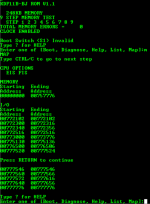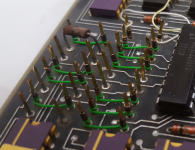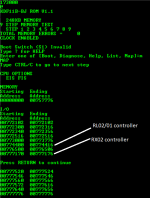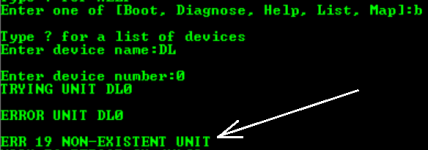>>> By
link I think Dave meant to inquire which
wire links/jumpers are installed, not an internet URL link...
Thanks for the clarification Don. Yes I did.
I also agree that the documentation manual appears to be incorrect regarding the link insert/removed state. I also believe the correct state to be is INSTALLED=1, REMOVED=0 for the address. Let's ignore the vector for now. This then causes the manual text to align with the default configuration (as also shown within the manual).
This gives us a default address of 1111001111
XXX (note the X's because these three address lines are not used to decode the base address of the card, but to select internal registers on the card). However, these address lines have to be taken into account when converting from the link settings to the correct base address for the card. Also, the card 'lives' in the I/O space, so you need to pad the above code to 16 bits (or 18 bits) by pre-pending 1's. As a 16-bit I/O address you would have
1111111001111
XXX which (when converted to octal) is 177170 (substituting '0' for X). As an 18-bit I/O address you would have 111111111001111XXX which (when converted to octal) is 777170 (again,substituting '0' for X).
As Don says, we can't see where the white wire wrap is connected to, so we don't really know whether A3 is correct or not.
Code:
By the way, I got
@777170/?
@177170/0000
This is correct. 177170 (in an 18 bit machine - with a 16-bit address) addresses the RAM. 777170 (in an 18-bit machine) is addressing a non-existent I/O device.
Let us assume that your controller is working (but we don't know at what I/O address it is appearing as). A simple way to identify it is to physically remove it from the backplane and perform another MAP. It should not now appear in the map of I/O addresses. If you get exactly the same response from the map command without the card being installed as you did with the card being installed - it is likely to be dead.
It should also not depend upon the specific QBUS slot that the card is physically plugged into (providing it is really a QBUS AB slot of course). This correct placement is only of significance for interrupt and DMA devices.
Hope this makes sense to you?
Dave







